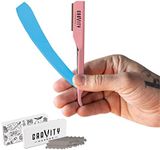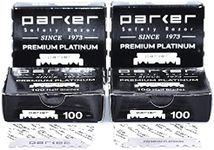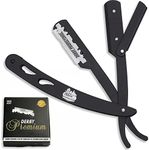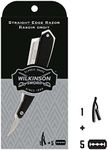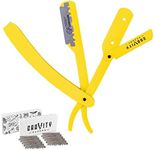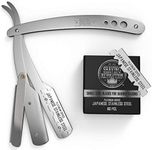Buying Guide for the Best Straight Razors
Choosing a straight razor is a personal decision that can greatly affect your shaving experience. The right razor should feel comfortable in your hand, suit your shaving style, and match your level of experience. Understanding the key features will help you find a razor that provides a close, smooth shave while being safe and enjoyable to use. Take your time to learn about the different aspects of straight razors so you can make a confident choice that fits your needs.Blade MaterialThe blade material determines how sharp the razor can get, how long it stays sharp, and how easy it is to maintain. Most straight razors are made from either carbon steel or stainless steel. Carbon steel blades are known for their sharpness and ease of honing, but they can rust if not dried and cared for properly. Stainless steel blades are more resistant to rust and require less maintenance, but they may be a bit harder to sharpen. If you want a razor that is easy to maintain, stainless steel is a good choice. If you are willing to put in a bit more care for a sharper edge, carbon steel might be better for you.
Blade WidthBlade width is measured in eighths of an inch and affects how much of the blade touches your face at once. Narrower blades (like 4/8 or 5/8 inch) are easier to maneuver and are good for beginners or those with smaller faces. Wider blades (like 6/8 or 7/8 inch) can hold more lather and are preferred by experienced users who want a heavier, more substantial feel. If you are new to straight razors, a medium width like 5/8 inch is a safe and versatile choice.
Blade GrindThe grind refers to how the blade is shaped and how thin it is. A full hollow grind means the blade is very thin and flexible, which gives a very close shave but can be less forgiving if you make a mistake. A wedge grind is thicker and more rigid, making it easier to control but not as sharp. Beginners often do well with a half-hollow or quarter-hollow grind, which balances sharpness and control. Your experience level and how close you want your shave to be should guide your choice here.
Point TypeThe point is the shape of the blade's tip. Common types include round point, square point, and French point. A round point is more forgiving and less likely to nick your skin, making it ideal for beginners. A square or French point allows for more precise shaving in tight areas but requires a steadier hand. If you are just starting out, a round point is usually the safest and easiest to use.
Handle MaterialThe handle, or scales, can be made from plastic, wood, bone, or other materials. While the material doesn't affect the shave directly, it does influence the razor's weight, balance, and appearance. Lighter handles are easier to maneuver, while heavier ones can feel more stable. Choose a handle that feels comfortable in your hand and appeals to your sense of style, as this will make your shaving experience more enjoyable.
Ease of MaintenanceStraight razors require regular care, including cleaning, drying, and occasional honing and stropping. Some razors are easier to maintain than others, depending on the blade material and grind. If you prefer a low-maintenance option, look for stainless steel and a less delicate grind. If you enjoy the ritual of razor care, a carbon steel blade with a hollow grind might be more satisfying. Think about how much time and effort you want to spend on upkeep when making your choice.




